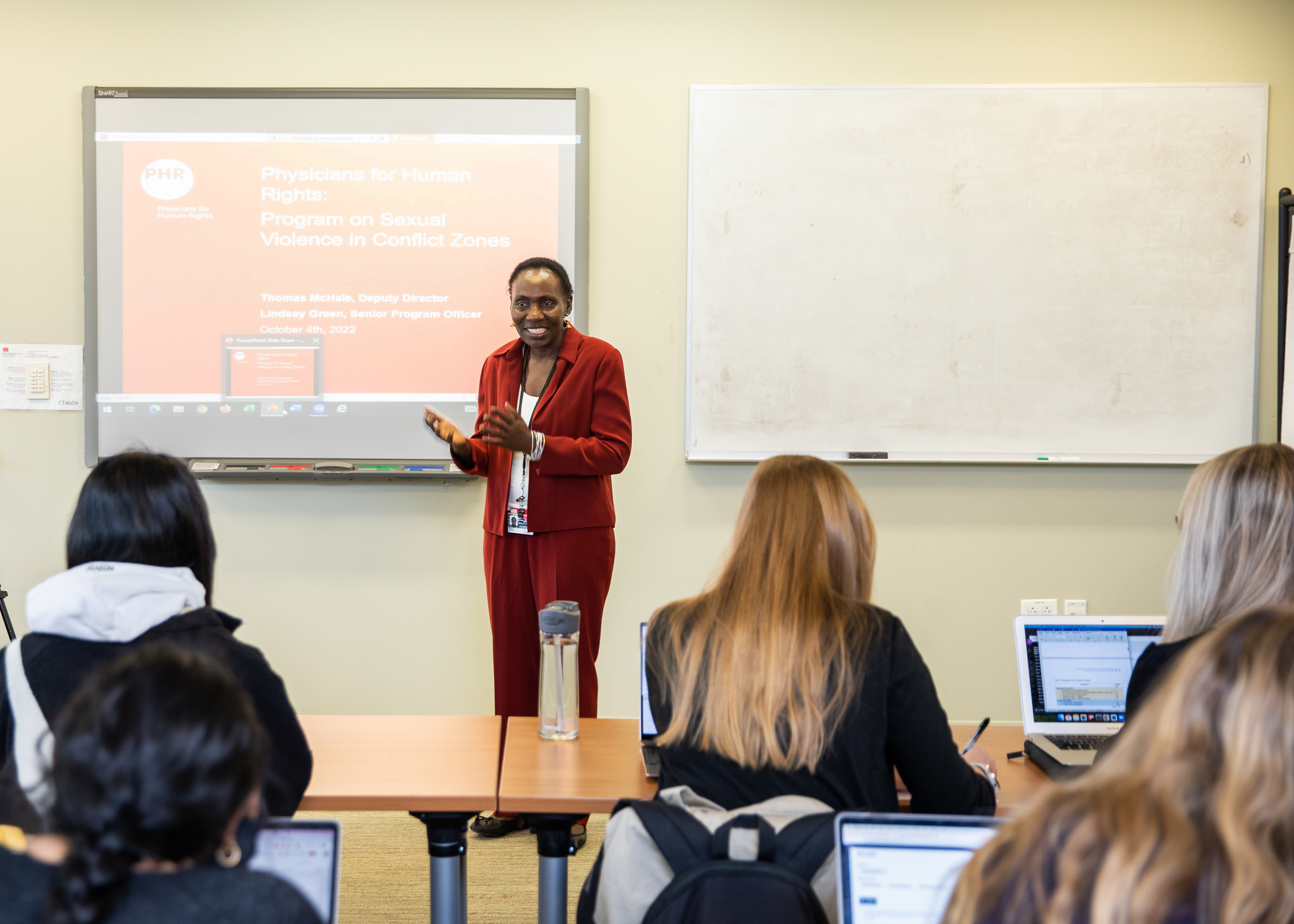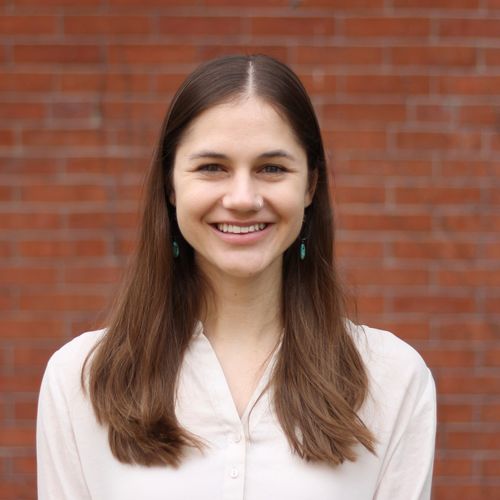Teaching as a Team: Improving Core Course Delivery.

Monica Onyango, clinical associate professor of global health, delivers a lecture to a classroom of students.
Teaching as a Team: Improving Core Course Delivery
SPH’s core course instructors have collaborated on new research to improve curriculum delivery. Their findings highlight the importance of balancing course consistency with instructor autonomy.
A new analysis from a team of educators at the School of Public Health has reinforced the importance of teamwork in ensuring that students enrolled in the School of Public Health’s On-Campus Master of Public Health program—one of the country’s largest—receive quality, up-to-date content across multiple, concurrent sections of core courses.
Throughout the 2021-2022 school year, the core course teaching team for PH720 Individual, Community, and Population Health at SPH experimented with four strategies to promote collaboration and improve overall delivery of the core curriculum. An analysis of the advantages and disadvantages of their approach was recently published in the journal Pedagogy in Health Promotion. The article, titled “Balancing Faculty Autonomy with Collaboration, Course Updates, and Consistency in Core Courses: Recommendations for Teaching Teams and Administrators of Schools and Programs of Public Health,” lays out their seven take-aways for improving teaching of public health’s foundational concepts. The findings will be presented at the 2025 Association of Schools and Programs of Public Health Annual Meeting in Arlington, Virginia later this month.
“Public health education is always evolving. As our field is somewhat unique in the ways in which we have to deal with data, policies, and programs that change nearly every day, thinking about what, how, and why we teach is really important—and that is best done with colleagues, together,” says Lisa Sullivan, associate dean for education and a former core course instructor.
Over the course of their research, the teaching team employed four strategies to coordinate collaboration: creating common course materials, holding regular team meetings, recording instructors’ reflections weekly after classes, and conducting final reviews to discuss with instructors their overall impressions of the syllabi and the semester. Erin Fortunato, a DrPH student in leadership, management, and policy and a former project manager at SHIELD, SPH’s School Health Institute for Education and Leadership Development, orchestrated the process. A Certified Health Education Specialist, Fortunato also worked as a coordinator of health education at the high school level prior to beginning her doctoral studies.
“I was very used to having a team of teachers all teaching basically the same thing, but in different sections and it was part of my role to help everyone be as coordinated as possible, but to respect people doing things in their own way,” says Fortunato, who is the first author of the study. Faculty each bring their own experiences and expertise to the classroom, she says, but it is important for the integrity of the program to find a balance between instructor authenticity and the consistent delivery of content across sections.
Eight faculty volunteered to participate in a year-long investigation designed to find this balance, including Sophie Godley, clinical associate professor of community health sciences; Carol Dolan, clinical professor of community health sciences; Jennifer Beard, clinical associate professor of global health; Jacob Bor, associate professor of global health; Nafisa Halim, research assistant professor of global health; Monica Onyango, clinical associate professor of global health; Junenette Peters, associate professor of environmental health; and Jennifer Schlezinger, professor of environmental health. Upon completion of the exercise, Godley suggested the group document their findings to share with other schools and programs of public health.
Together, the team came up with seven recommendations to support the success of similar teaching teams:
- Establish dedicated meeting times
- Appoint a team leader
- Incorporate both independent and team reflection
- Support instructors to openly discuss and learn from mistakes in non-judgmental, promotion-neutral sessions
- Refer struggling students to external resources, such as peer tutoring and writing coaching
- Promote small group activities within larger classes
- Follow the Council on Education for Public Health’s requirements for public health degree programs but allow instructors to tailor their own examples to balance autonomy with consistency
“Big picture, the most impactful [change] would be helping faculty feel secure enough to say, ‘I’m not comfortable teaching this,’ or ‘I need more training,’ or ‘This didn’t go well,’ and not feeling like they will be officially or unofficially judged,” says Fortunato. “As teachers, we all have things we are more or less comfortable with. We all have days when things don’t go exactly right. Fostering an environment in which faculty are encouraged to be vulnerable and given support to be the best teachers they possibly can be will benefit students.”
